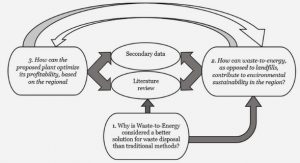Get Complete Project Material File(s) Now! »
Family firms
“A family business refers to a company where the voting majority is in the hands of the controlling family; including the founder(s) who intend to pass the business on to their descendants” (International Finance Corporation, 2008, p. 12). However, there is not one exclusive definition to what constitutes a family firm. For example, Colli, Fernan-dez-Perez and Rose (2003, p. 30) refers to a family firm as: “ a family member is chief executive, there are at least two generations of family control, (and) a minimum of 5 percent of voting stock is held by the family or trust interest associated with it”. Miller and Le Breton-Miller (2003, p. 127) on the other hand defines it as “one in which a family has enough ownership to determine the composition of the board, where the CEO and at least one other executive is a family member, and where the intent is to pass the firm on to the next generation”. Clearly, one can see that different perceptions of family firms exist and the spectra of definitions reaches further than above state-ments. However, this thesis will make use of the widely used definition of Miller and Le Breton-Miller (2003) due to its simplicity, clarity and position in the field. The emer-gence of the various definitions can be a result of cultural differences and that it is im-possible to find a generic explanation to what a family firm is (Carney, 2005). Al-though, the above-mentioned definitions contains three fundamental attributes pertain-ing to: (1) ownership and control, (2) family involvement in management, and (3) the expectation, or realization, of family succession (Carney, 2005).
Familiness
The struggle to recognize and clarify the unique characteristics and qualities of family businesses has been present since the origin of family business research (Habbershon and Williams, 1999; Frank et al., 2010). Although, during the nineties firms’ internal at-tributes as a source of advantage received greater attention (Habbershon and Williams, 1999). Many years of research have emphasized the positive aspects of being a family firm in contrast to a non-family firm but how family involvement was related to this remained in the dark for a long time (Habbershon and Williams, 1999; Frank et al., 2010).
As stated, it has for many years been obvious that family firms have unique characterist-ics but there is still little known about how to assess their uniqueness and link it to ad-vantages for the firm. Therefore, studies about family involvement in family firms con-tinuously received response in the “So What?” category, where the unique characterist-ics where acknowledged but not understood (Habbershon and Williams, 1999). In 1999, Habbershon and Williams (1999) put the term “resource based view” (RBV) in relation to family involvement and a deeper understanding of family involvement took form through a new concept called “familiness”. The term familiness is used to describe the strategic advantage that the family firm could hold because of the unique bundle of re-sources an owning and managing family could have (Zellweger, Eddleston and Keller-manns, 2010; Habbershon, Williams and MacMillan, 2003; Pearson, Carr and Shaw, 2008).
The motivation for a new concept was that no existing conclusive model successfully explained and analyzed family firm performance. Habbershon and Williams (1999) introduced the concept of familiness with a belief that it could bring the unique qualities of a family firm to light. They tried to answer the question “ How are family businesses different from other types of businesses (e.g. Non-family businesses)?” and familiness has now become a key concept in the understanding of family business research (Frank et al., 2010).
The term Resource Based View (RBV) of the firm emphasize the heterogeneousness of a firm and that an opportunity for competitive advantage lay in its’ idiosyncratic, im-mobile, inimitable and sometimes intangible bundle of resources (Barney, 1991). Hab-bershon and Williams said that due to the examination of the links between a firm’s in-ternal characteristics and performance, RBV “provides the opportunity to more fully de-lineate the competitive capabilities of family companies” (1999, p. 9). They held that earlier generic approaches failed in specifying categorizations and were imprecise in their definitions. In contrast they believed that the RBV could indentify certain family firm resources and match them to the firm’s capabilities.
Nevertheless, different opinions exist on what theory that is most suitable as the founda-tion of familiness. Some attempts have been done where the social capital theory has been used as the base. Social capital may be defined as “…the sum of the actual and po-tential resources embedded within, available through, and derived from the network of relationships possessed by an individual or social unit” (Nahapiet & Ghoshal, 1998, p. 243). Pearson, Carr and Shaw (2008) as well as Lester and Cannella (2006) used the social capital theory as a base when discussing familiness. Lester and Cannella (2006) were the ones first discussing how different dimensions and variables could be used in the description and explanation of familiness. They focus on community-level social capital, thus differing from Pearson, Carr and Shaw (2006) who use the social capital theory in order to distinguish limitations with the RBV when related with familiness. The limitations with RBV as the theoretical base of familiness, recognized by Pearson, Carr and Shaw (2008), highlight the necessity of supplementary theory for the further development and conceptualization of the concept. They believed that a different approach as foundation would complement earlier research concerning familiness and help bringing it forward.
With the limitations acknowledged, RBV is still the most frequently used theory as the foundation of familiness (Frank et al., 2010). Since RBV is the most recognized founda-tion and used in the majority of the studies about familiness this is the one used in this study.
Measurement of familiness
The most recognized instrument introduced regarding the measurements of family in-fluence is the F-PEC scale (Figure 1), introduced by Astrachan, Klein and Smyrnios (2002). This scale looks at the dimensions (1) power, (2) experience, and (3) culture, which combined can lead to valuable resources for the firm, such as knowledge and skills. Therefore, the scale is not bound to any definition of family firm, but provides an overall measure of the extent of family involvement (Astrachan et al., 2002; Klein et al., 2005).
The first dimension, “power”, examines what influence the owning family has on gov-ernance and management of the firm, whereas “Experience” measures information as-sembled over generations, such as knowledge, judgement and intuition. Finally, “cul-ture”, measures the overlapping values between the family the organisation as well as family commitment.
When introduced, the F-PEC scale was a first step towards a multidimensional approach to measure family influence and the validity and reliability receives support by empiri-cal studies (Klein et al., 2005). Astrachan et al. (2002) looked at how family involve-ment influence the business and proposed that this relation determines the family firm character. Klein et al. (2005) continued by stating that the F-PEC scale provides an op-portunity to examine firms along a spectrum with intensive family involvement on one side and no family involvement at the other.
Evidence shows that the F-PEC scale successfully could measure the familiness or lack of familiness in any firm, not solely family firms (Rutherford, Kuratko and Holt, 2008; Klein et al., 2005). However, criticism suggests that there is a need for a theoretically solid development of the measurement familiness to adequately capture the essence of the firm (Rutherford, Kuratko and Holt, 2008; Holt, Rutherford and Kuratko, 2010). Due to this, the data collection builds upon different theoretical approaches to capture familiness in a more adequate way.
When introducing the F-PEC scale, Astrachan et al. (2002) developed a questionnaire for measuring familiness (Appendix 1). The questionnaire consists of three different subscales with questions regarding involvement and experience under the two first ones. The third one, culture, on the other hand uses statements where the participant should rate to what extent he or she agrees with the statement on a scale from 1 to 5. This ques-tionnaire forms the groundwork for the questions in this research. The statements are included for an easier comparison and identification of familiness at the different hierar-chical levels. However, since the F-PEC scale was created for a quantitative study a need for supplementary questions after each statement is needed for a deeper discussion and understanding of the family involvement. These supplementary questions as well as additional questions based on theories brought up next are needed for the qualitative ap-proach and will support the identification of familiness.
1.Introduction
1.1 Background
1.2 Problem discussion
1.3 Purpose
1.4 Research questions
1.5 Definitions
2 Method and Methodology
2.1 Methodology
2.2 Method
2.3 Design of the study
2.4 Quality of the study
3 Frame of reference
3.1 Family firms
3.2 Familiness
3.3 Measurement of familiness
3.4 What forms familiness
3.5 Who forms familiness
3.6 Additional concepts
4 Findings
4.1 Spendrups Bryggeri AB
4.2 Interviews and focus groups
5 Analysis
5.1F-PEC
5.2 Cultural extension
6 Discussion
6.1 Limitations
6.2 Future research
6.3 Suggestions for Spendrups
7 Conclusion
8 Reflecting on the writing process
GET THE COMPLETE PROJECT
A cultural extension of familiness






